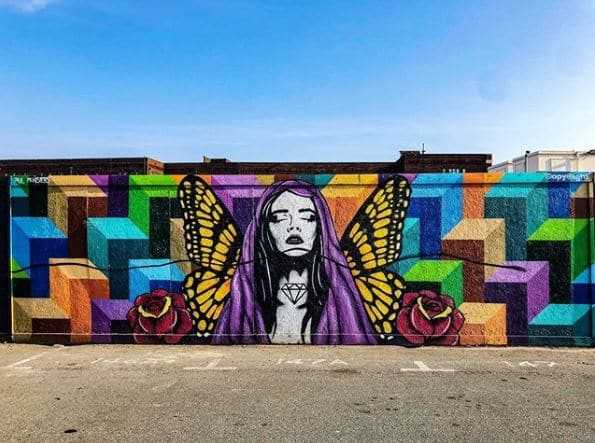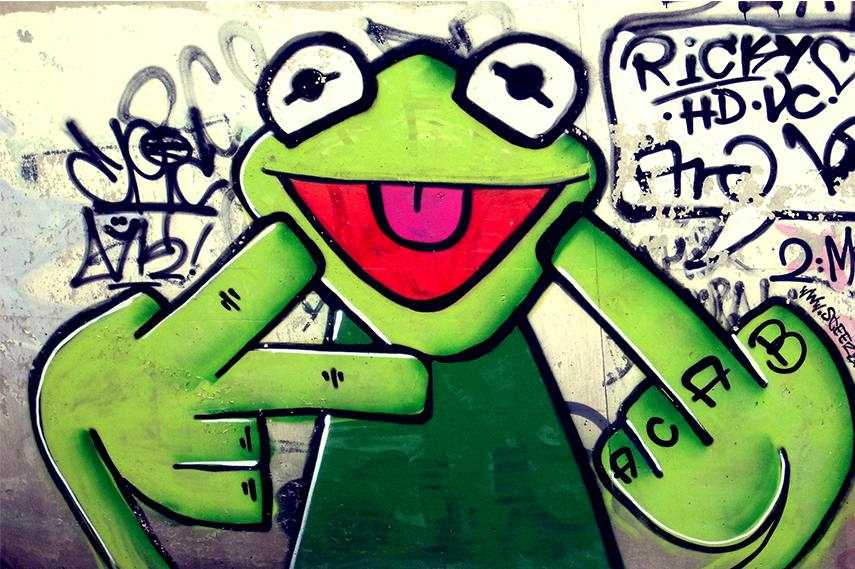
Spray paint has become an iconic tool in the world of street art, allowing artists to express themselves in vibrant and bold ways. With its origins tracing back to the graffiti movement of the 1970s in New York City, spray paint has since evolved into a versatile medium that has gained recognition and appreciation worldwide.
Artists who specialize in street art have embraced spray paint for its ability to create large-scale murals and intricate designs with ease. Unlike traditional painting methods, spray paint offers a unique level of control and speed, allowing artists to quickly cover large surfaces and execute their ideas in a matter of hours. The aerosol nature of spray paint also allows for seamless blending of colors, adding depth and dimension to each piece.
Not only does spray paint provide artists with the freedom to create visually captivating works, but it also plays a significant role in the urban landscape. Street art has the power to transform plain walls into vibrant canvases, adding a touch of creativity and social commentary to public spaces. Through the use of spray paint, artists can communicate powerful messages and spark conversations about various social, political, and cultural issues.
However, the use of spray paint in street art is not without its controversies. Some argue that street art, including the use of spray paint, is a form of vandalism and contributes to the deterioration of public spaces. Others believe that street art is a form of self-expression that brings life and character to urban environments. Regardless of these debates, spray paint continues to be a prominent tool in the hands of street artists, allowing them to leave their mark on the world.
Street art has a rich history that dates back many centuries. One element of street art that has gained significant popularity over the years is graffiti. Graffiti is considered one of the earliest forms of artistic expression on public walls, buildings, and other structures. It can be traced back to ancient civilizations, such as ancient Greece and the Roman Empire.
In ancient times, graffiti was often used to convey political messages or mark territories. It served as a way for people to express their thoughts, feelings, and beliefs. The graffiti of this era was typically carved or engraved into stone or painted on walls using natural pigments.
However, it was not until the 20th century that graffiti truly started to gain recognition as an art form. In the 1960s and 1970s, graffiti became prevalent in urban areas, particularly in New York City. This period marked the birth of graffiti as we know it today. Street artists began using spray paint, which allowed for quick and vibrant creations on a larger scale.
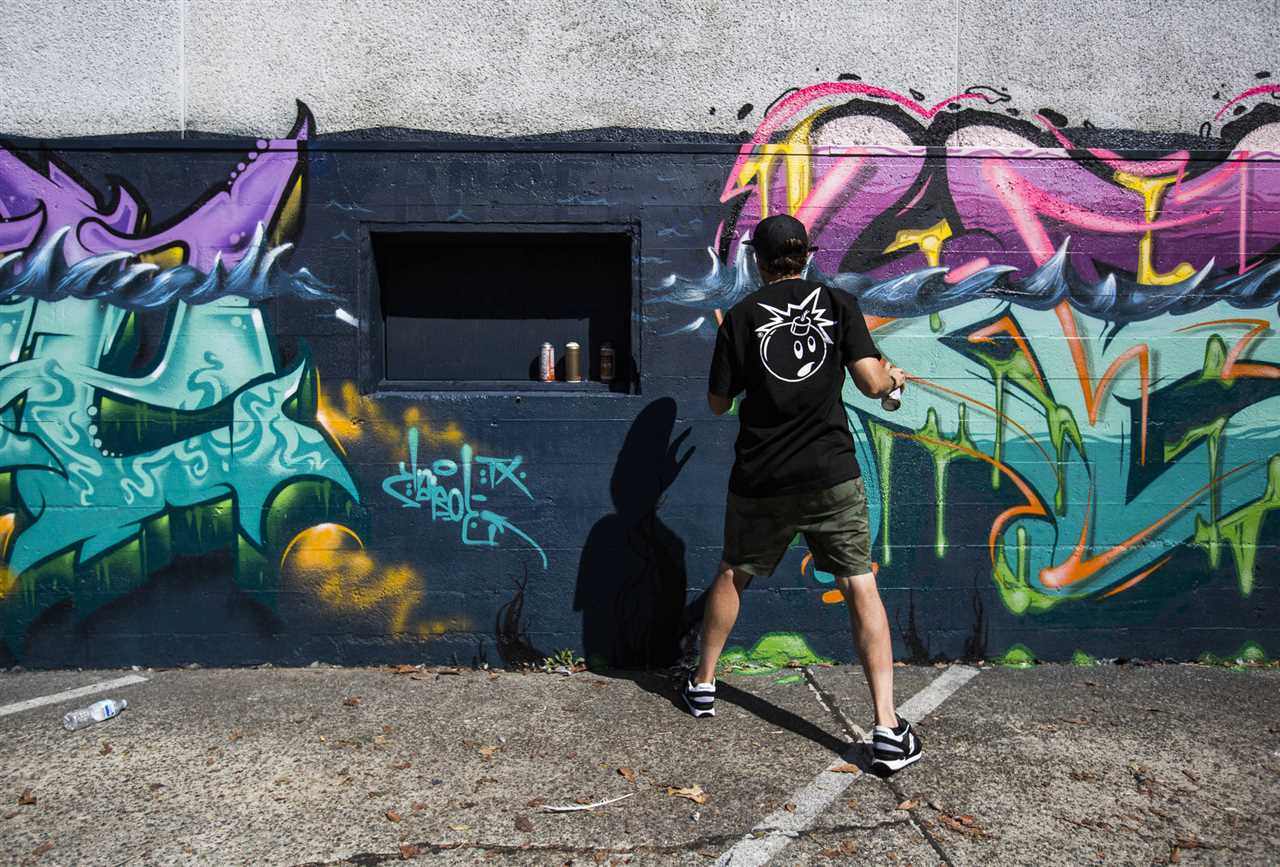
Graffiti became closely associated with the emerging hip-hop culture. Many hip-hop artists used graffiti as a means of self-expression alongside other elements such as rap music, breakdancing, and DJing. Graffiti served as a way for these artists to leave their mark on the city and gain recognition within the hip-hop community.
The Evolution of Graffiti Art
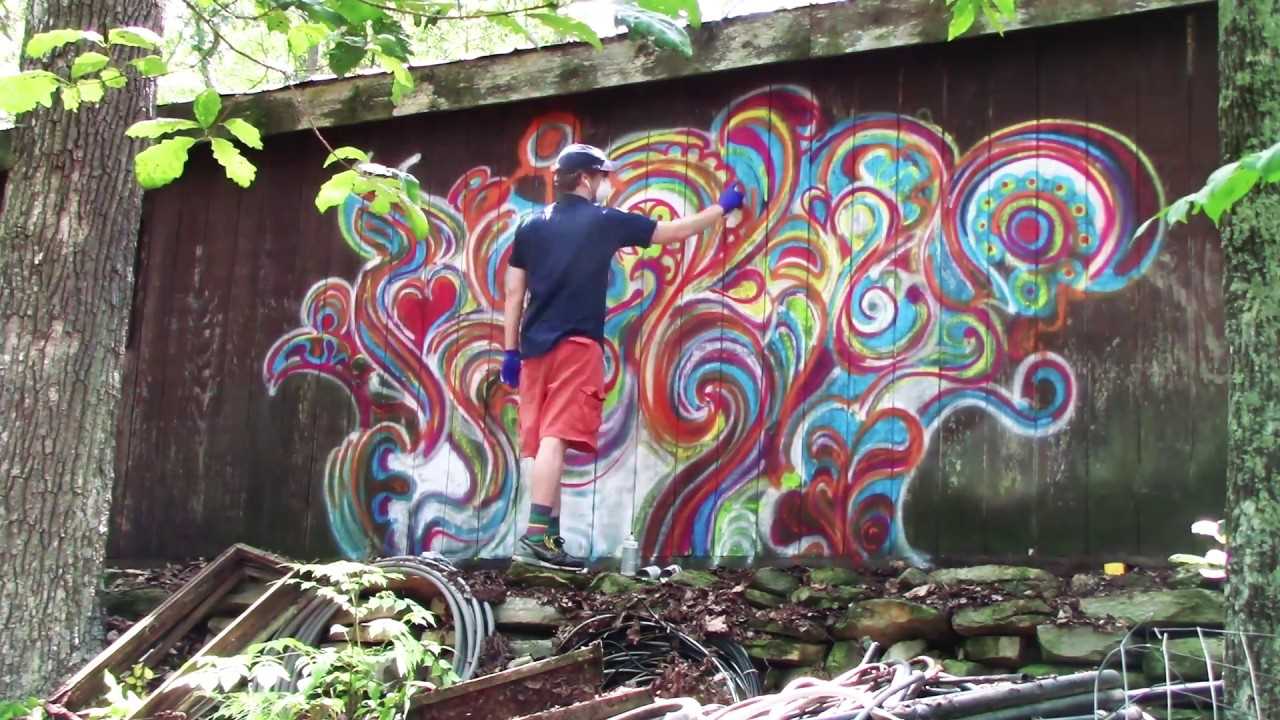
Over the years, graffiti art has evolved and diversified. Artists have adopted various styles and techniques, incorporating elements of realism, abstraction, and typography into their works. Graffiti has also become more accepted in mainstream art circles, with renowned graffiti artists gaining recognition and exhibiting their pieces in galleries and museums.
Today, graffiti continues to be a prominent feature in street art around the world. It has become a means of cultural expression, a form of social commentary, and a way for artists to challenge societal norms. Street art festivals, mural projects, and public art installations have contributed to the growing appreciation of graffiti as a legitimate art form.
Overall, the history of graffiti in street art showcases its transformation from an underground form of expression to a globally recognized art movement. It has become an integral part of the urban landscape, captivating audiences and sparking conversations about art, society, and personal expression.
The Essence of Street Art
Street art is an expressive form of art that can be found in urban environments all over the world. It represents a voice for the marginalized and underrepresented, as well as a way to beautify public spaces and challenge societal norms.
One of the defining characteristics of street art is its temporary nature. Unlike traditional art forms that are created to last for centuries, street art is often transient and ephemeral. It can be easily painted over or removed, making it a statement that exists only in the moment. This impermanence gives street art a sense of urgency and immediacy, as artists have to work quickly to create their pieces before they are gone.
Another important aspect of street art is its democratic nature. Unlike gallery art, which is often exclusive and only accessible to a select few, street art is accessible to anyone with a pair of eyes. It can be found on city walls, sidewalks, and even in alleyways. By making art available to all, street artists challenge the notion that art should only be reserved for the elite.
Furthermore, street art is often a form of protest or social commentary. Artists use their work to express their opinions on various issues, such as politics, inequality, and the environment. By taking their message to the streets, they can reach a wider audience and spark important conversations. Street art has the power to disrupt and challenge the status quo, forcing people to confront uncomfortable truths and question their own beliefs.
The Role of Tags in Street Art
When discussing street art, it is impossible to ignore the role that tags play in this artistic movement. Tags, often the artist’s signature or nickname, are a distinctive feature of street art and hold significant meaning within the community.
The Origin of Tags
Tags have their roots in graffiti culture, where they emerged as a way for artists to mark their territory and establish their presence in public spaces. These unique signatures quickly became symbols of identity and personal style, allowing artists to leave a lasting impression on their audience.
As street art gained popularity and evolved into a recognized art form, tags also became a means of communication. Artists used their tags to express their ideas, provoke discussions, or convey political messages. They became a powerful visual language that transcended barriers, capturing the attention and imagination of both art enthusiasts and the general public.
The Significance of Tags
Tags are more than just a name scribbled on a wall; they represent the artist’s individuality and their connection to the urban environment. Street artists use tags to reclaim public spaces, transforming them into a canvas for self-expression and reclaiming ownership over the concrete jungles that surround us.
Moreover, tags serve as a form of recognition and respect within the street art community. Artists often develop unique, recognizable tags that become associated with their work, helping to build their reputation and establish themselves as part of the artistic movement.
While tags can sometimes be viewed as vandalism or defacement of private property, they are an integral part of street art culture. They add vibrancy and character to city landscapes, challenging conventional notions of what art should be and pushing boundaries.
Tags hold a significant role in street art. They serve as a personal mark, a form of communication, and a symbol of identity. Whether appreciated or criticized, tags are an essential element of the urban art movement, contributing to its diversity and subversive nature.
Urban Landscape as a Canvas
The urban landscape serves as an ideal canvas for street artists using spray paint. In crowded cities full of concrete and steel, street art offers a vibrant contrast to the monotonous backdrop. Walls, buildings, and even entire neighborhoods become transformed into breathtaking works of art.
Street art has the power to breathe life into neglected spaces, turning desolate areas into colorful, engaging attractions. Abandoned buildings are revitalized with vibrant murals, contributing to a sense of community pride. The use of spray paint allows artists to quickly cover large areas with bold strokes, creating dramatic pieces that demand attention.
Furthermore, using spray paint in street art allows for spontaneity and creativity. Artists can quickly create intricate designs or expressive portraits, capturing the essence of a moment. The medium’s fluid nature makes it well-suited for capturing movement and energy, adding a dynamic element to the artwork.
Street artists often use spray paint to convey powerful messages or comment on social and political issues. By utilizing the urban landscape as their canvas, they reach a wider audience who may not typically seek out art in traditional galleries. This accessibility helps to spark conversations and raise awareness about important topics.
Exploring the World of Stickers in Street Art
Street art is a dynamic and evolving form of artistic expression that incorporates various mediums and techniques. While spray paint is often associated with street art, another popular method that artists use to create their works is through the use of stickers.
The Evolution of Stickers in Street Art
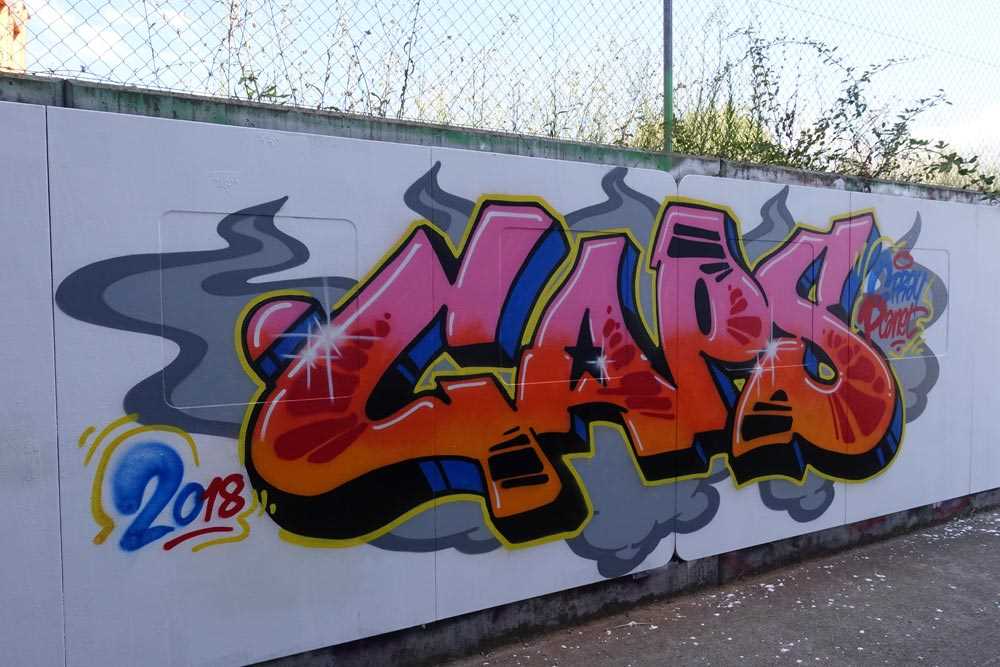
Stickers have a long history in street art and have evolved from simple adhesive labels to intricate artworks in their own right. Initially, stickers were used as a quick and easy way for artists to leave their mark on the streets. However, over time, they have become an integral part of street art culture, with artists using them to convey their messages and express their creativity.
The Versatility of Stickers
One of the main advantages of using stickers in street art is their versatility. Artists can create their own unique designs, print them out, and easily stick them onto a variety of surfaces. Stickers can be placed on walls, lampposts, traffic signs, and even on other works of street art. This flexibility allows artists to reach a wider audience and make a statement in unexpected places.
Stickers also provide a way for artists to collaborate and share their work with others. Artists often trade or swap stickers with each other, creating a sense of community and camaraderie within the street art world.
The Impact of Stickers in Street Art
Stickers have had a significant impact on the world of street art. They have made the art form more accessible, allowing individuals who may not have the skills or resources to create large-scale murals to still participate in the movement.
Stickers also have the power to spark conversations and provoke thought. The unexpected appearance of a sticker in a public space can catch people off guard and force them to reevaluate their surroundings. Stickers can be used to express political beliefs, challenge societal norms, or simply bring a touch of beauty to otherwise mundane environments.
The Contemporary Street Art Movement
This movement is characterized by its unconventional approach to art, often challenging traditional ideas of what constitutes as “art.” Street artists use public spaces as their canvas, transforming dull and mundane walls into vibrant and colorful pieces of art.
One of the key aspects of the contemporary street art movement is its emphasis on social and political commentary. Many street artists use their work as a means to express their opinions on various issues, such as inequality, oppression, and environmental concerns.
The use of spray paint in street art allows artists to quickly and effectively cover large areas with vibrant colors and intricate designs. This medium also provides a sense of anonymity, allowing artists to operate in urban environments without being easily identified.
Despite its often controversial nature, street art has been gaining recognition in the art world. Major cities have dedicated spaces and festivals to showcase street art, further solidifying its place as a legitimate art form.
The Impact of Technology
With the advent of social media and the internet, street art has been able to reach a much wider audience. Artists can easily document and share their work with people around the world, allowing for greater visibility and recognition.
The Influence of Street Art on Popular Culture
Street art has also significantly influenced popular culture. Its distinct aesthetic has been adopted by brands, fashion designers, and musicians, further blurring the lines between street art and mainstream culture.
The contemporary street art movement continues to evolve and push boundaries, challenging traditional notions of art and bringing creative expression to public spaces.
Challenges and Controversies Surrounding Street Art
Street art, although admired by many, faces a number of challenges and controversies that can shape public perception and acceptance of this form of artistic expression.
One of the main challenges street artists face is the legality of their work. In many places, street art is considered vandalism and is punishable by law. The act of creating art on private or public property without permission can lead to fines, community service, or even imprisonment. As a result, street artists often have to work quickly and discreetly, risking their safety and facing potential legal consequences for their art.
Another challenge is the ever-changing nature of street art. The temporary nature of many street art pieces means that they may be removed, painted over, or destroyed by authorities or other artists. This constant evolution can be disheartening for street artists who pour their time and creativity into their work, only to see it disappear. However, many street artists embrace this impermanence and view it as an essential part of the art form.
Controversies surrounding street art also arise from its perceived impact on public spaces. While some people appreciate street art as a way to beautify and revitalize urban environments, others see it as visual pollution or a sign of urban decay. There is ongoing debate as to whether street art should be considered an illegal act or a legitimate art form that deserves recognition and protection.
Furthermore, the commercialization of street art has led to conflicts within the community. Some street artists view commercial ventures, such as selling prints or reproductions of their work, as a way to support themselves and gain exposure. Others argue that commercialization detracts from the authenticity and spirit of street art, turning it into a commodity.
Impact and Influence of Street Art
One of the most significant impacts of street art is its ability to transform neglected urban spaces into vibrant and dynamic areas. Through the use of vibrant colors, bold imagery, and unconventional techniques, street artists can breathe new life into once forgotten corners of a city. Street art has the power to make people stop and appreciate their surroundings, sparking conversations and forming connections among community members.
Moreover, street art can be a powerful tool for social and political activism. Artists can use their work to raise awareness about important issues and challenge societal norms. Whether it’s tackling issues like racism, inequality, or climate change, street art provides a platform for artists to express their opinions and engage with a larger audience.
Inspiring a New Generation
Street art has a unique ability to inspire and motivate a new generation of artists. By its very nature, street art is accessible and visible to all, regardless of their background or social status. This inclusivity allows aspiring artists to witness and engage with art in a way that traditional galleries may not provide.
Not only does street art inspire creativity, but it also serves as a medium for artists to experiment with new techniques and styles. The freedom of expression offered by street art encourages artists to push boundaries and challenge traditional notions of what art should be. This results in a constant evolution of street art styles and forms, pushing the boundaries of artistic innovation.
The Global Influence of Street Art
Street art’s influence extends far beyond local communities, thanks to the internet and social media. Artists can now share their work with a global audience, making street art more accessible than ever before. This increased visibility has led to a cross-pollination of ideas and styles, fostering collaboration and inspiration among street artists from different parts of the world.
Furthermore, street art has become a key feature of many urban tourism experiences. Travelers seek out street art hotspots to explore and appreciate the unique artistic expressions of a city. Street art has become an integral part of cultural tourism, contributing to the economic growth and revitalization of neighborhoods.

I am a mural enthusiast and a fervent admirer of street art. Rather than creating murals myself, I am passionate about collecting them. My love for street art knows no bounds. I am dedicated to curating and cherishing these artworks that grace the streets. My collection stands as a testament to my profound appreciation for this form of artistic expression.
read about me




